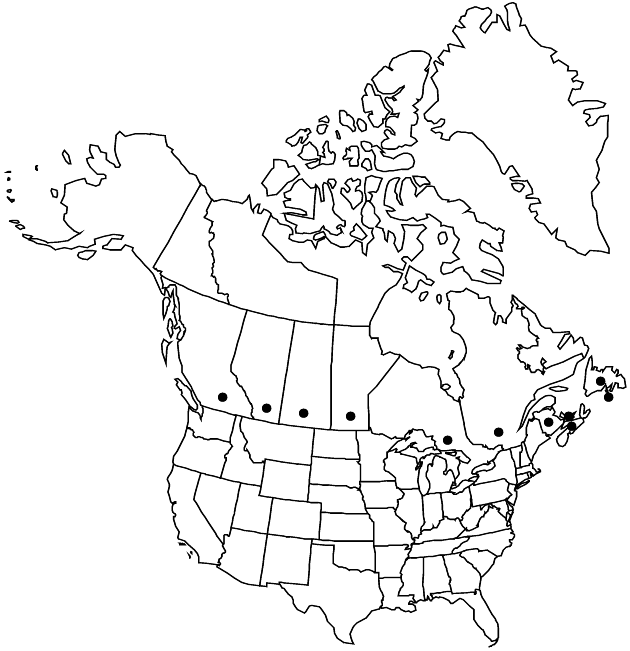Difference between revisions of "Senecio viscosus"
Sp. Pl. 2: 868. 1753.
FNA>Volume Importer |
imported>Volume Importer |
||
| (6 intermediate revisions by 2 users not shown) | |||
| Line 6: | Line 6: | ||
|place=2: 868. 1753 | |place=2: 868. 1753 | ||
|year=1753 | |year=1753 | ||
| + | }} | ||
| + | |special_status={{Treatment/ID/Special_status | ||
| + | |code=I | ||
| + | |label=Introduced | ||
}} | }} | ||
|basionyms= | |basionyms= | ||
| Line 23: | Line 27: | ||
|elevation=1–300 m | |elevation=1–300 m | ||
|distribution=St. Pierre and Miquelon;Alta.;B.C.;Man.;N.B.;Nfld. and Labr. (Nfld.);N.S.;Ont.;P.E.I.;Que.;Sask.;Conn.;Ill.;Maine;Mass.;Minn.;N.H.;N.J.;N.Y.;Pa.;R.I.;Wis.;Eurasia. | |distribution=St. Pierre and Miquelon;Alta.;B.C.;Man.;N.B.;Nfld. and Labr. (Nfld.);N.S.;Ont.;P.E.I.;Que.;Sask.;Conn.;Ill.;Maine;Mass.;Minn.;N.H.;N.J.;N.Y.;Pa.;R.I.;Wis.;Eurasia. | ||
| − | |discussion=<p>Senecio viscosus is a smelly, Eurasian weed now widely scattered in areas of cool damp climates, often as a casual waif. The viscid hairs trap wind-blown particles of sand, dust, and soot, which give the surfaces varying textures and colors.</p> | + | |introduced=true |
| + | |discussion=<p><i>Senecio viscosus</i> is a smelly, Eurasian weed now widely scattered in areas of cool damp climates, often as a casual waif. The viscid hairs trap wind-blown particles of sand, dust, and soot, which give the surfaces varying textures and colors.</p> | ||
|tables= | |tables= | ||
|references= | |references= | ||
| Line 32: | Line 37: | ||
-->{{#Taxon: | -->{{#Taxon: | ||
name=Senecio viscosus | name=Senecio viscosus | ||
| − | |||
|authority=Linnaeus | |authority=Linnaeus | ||
|rank=species | |rank=species | ||
| Line 47: | Line 51: | ||
|publication title=Sp. Pl. | |publication title=Sp. Pl. | ||
|publication year=1753 | |publication year=1753 | ||
| − | |special status= | + | |special status=Introduced |
| − | |source xml=https:// | + | |source xml=https://bitbucket.org/aafc-mbb/fna-data-curation/src/2e0870ddd59836b60bcf96646a41e87ea5a5943a/coarse_grained_fna_xml/V19-20-21/V20_1252.xml |
|tribe=Asteraceae tribe Senecioneae | |tribe=Asteraceae tribe Senecioneae | ||
|genus=Senecio | |genus=Senecio | ||
Latest revision as of 19:59, 5 November 2020
Annuals, (10–)20–40(–60) cm (taprooted). Herbage densely fetid-viscid (hairs glandular). Stems single. Leaves evenly distributed; petiolate; blades obovate to oblong (pinnately dissected to pinnatifid), 2–7 × 1.5–4 cm, bases tapered or ± truncate, ultimate margins wavy or crenate-dentate (distal leaves sessile, smaller, ± clasping). Heads (1–)3–8(–30) in irregular, corymbiform arrays. Calyculi of 2–5 bractlets (largest to 4 mm). Phyllaries (± 13) ± 21, 5–7 mm, tips black. Ray florets ± 13; corolla laminae 1–2 mm (usually coiled, scarcely surpassing phyllaries). Cypselae usually glabrous, sometimes hairy. 2n = 40.
Phenology: Flowering spring–fall.
Habitat: Disturbed sites, especially open sandy or gravelly places
Elevation: 1–300 m
Distribution

Introduced; St. Pierre and Miquelon, Alta., B.C., Man., N.B., Nfld. and Labr. (Nfld.), N.S., Ont., P.E.I., Que., Sask., Conn., Ill., Maine, Mass., Minn., N.H., N.J., N.Y., Pa., R.I., Wis., Eurasia.
Discussion
Senecio viscosus is a smelly, Eurasian weed now widely scattered in areas of cool damp climates, often as a casual waif. The viscid hairs trap wind-blown particles of sand, dust, and soot, which give the surfaces varying textures and colors.
Selected References
None.